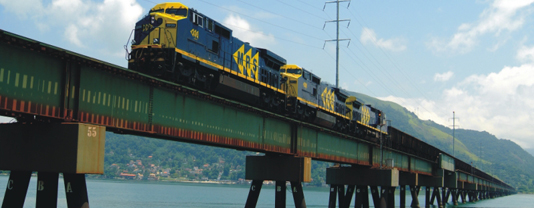Brazilian railway: the first line dates back to 1854 but already in 1889 the rail network extended for 10,000 kilometres. The network is now divided into 12 concessions run by 5 private undertakings and two state-owned enterprises.
Today, the Brazilian railway network extends for 29,817 km, 28,314 of which are managed through 12 concessions controlled by five private undertakings and two state-owned enterprises. The percentage of rail freight – for passenger services are largely restricted to the metropolitan network and there are virtually no long distance links – is equivalent to 25% of the total (freight carried by road amounts to 58%, by water 13%, by air and pipeline a mere 4%) less than that encountered in other countries of similar dimensions. If we exclude Russia, where 81% of the total freight travels by rail (a totally unique situation), in Canada the rate is 46%, while in Australia and the United States it is 43% and in China 37%. The Brazilian government, also in the light of these data, has launched plan to develop logistics and cargo transport, which aims to increase the railway’s share to a significant degree in the years to come.
Before analysing how the Brazilian network is structured today, a brief historical excursus may be of interest to aid our understanding of when the train arrived inBraziland how it took root in this large South American country.
Full article is available only for registered users.
Click the link below to download pdf version of Railway Engineering
